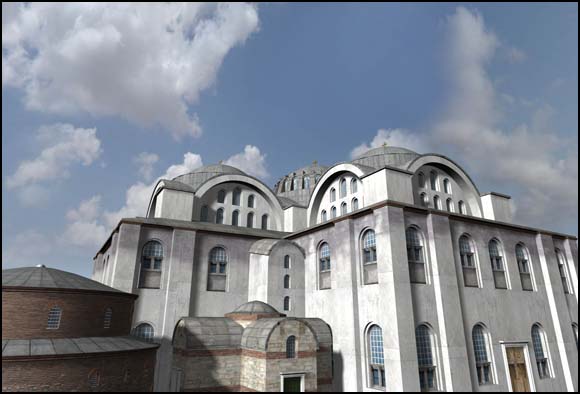
Constantine
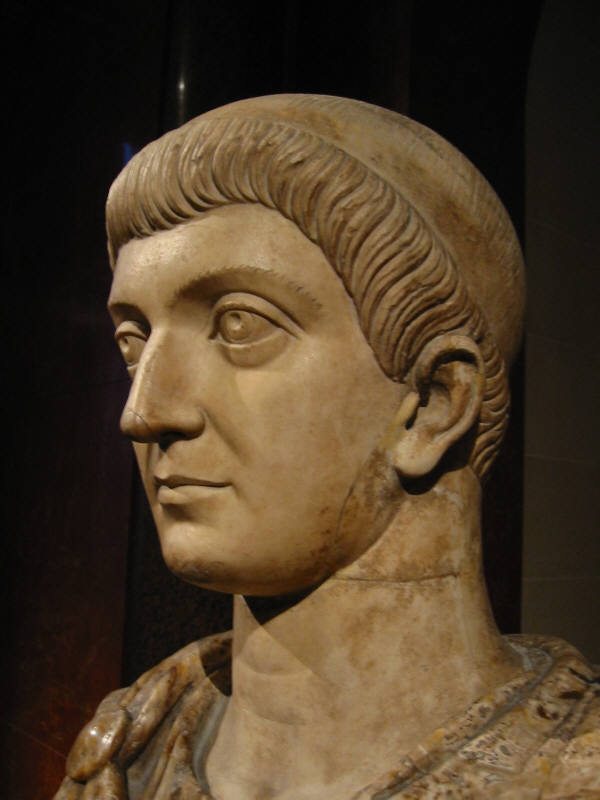
Flavius Valerius Aurelius Constantinus Augustus
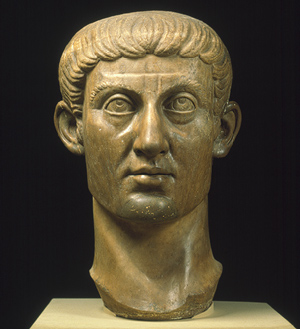
THE GREATEST CON MAN EVER, CONSTANTINE
Constantine was uniting his kingdom by establishing a high-bred religion at Constantine’s Council of Nicaea in A.D. 325. He did this to prevent his kingdom from disintegrating. He called the religion the Universal religion, or Catholic religion.
Constantine decreed the day of worship to be Sunday not Saturday (against one of the Ten Commandments) in order to honor a pagan god of the Sun. After one of his council meetings the Christian doctrine changed, and the new doctrine became “Jesus was God in the flesh.” The quotations of sayings by Jesus in the New Testament have never even hinted that he was God.
Constantine controlled the copying and distribution of the Catholic Bible. He commissioned the writing of fifty Bibles, only the New Testament, a large undertaking in those days. These copies were master copies from which all other New Testament Bibles were to be copied from.
PRIOR TO CATHOLIC
Rome had the Jewish holy land as their enemy so much so that they leveled the whole country, more specifically the holy city of Jerusalem in 70 C.E. The order for destroying the sacred Temple was that there not to be one stone on top of another. Yet the same united Roman state under Constantine decreed Christianity as the state religion, a religion whose origin was Judea and Jerusalem and it’s savior was a Jewish prophet (or God) who was executed by a Roman governor. At the same time Rome made a concerted effort to eliminate the then pagan religious cults that competed against the Constantine declared state religion.
In 305 C.E. , just 17 years prior to the Christianity state religion decree, Rome had declared the state religion to be the Persian savior Mithras. This savior was declared “Protector of the Empire.” This also was irregular since Persia was one of Rome’s main enemies. Mithras was born on December 25 (just like Jesus) and it was common for this cult to celebrate with a symbolic meal of bread and wine. Mithras is the root of the word Myth.
Mithraism started to spread around the Roman Empire around the first century and by the third century it had spread “from the banks of the Black Sea to the mountain of Scotland, and to the borders of the great Sahara Desert.” Slaves would often rise to the top ranks in the religion. Right before the third century a Roman named Commodus was initiated into the mysteries of Mithra which lead to a swell in popularity among the people of the Empire. Emperors after Commodus, as well as other prior Emperors, tried to establish Mithraism as the religion of the Empire, and as was stated earlier, in 305 C.E. it was declared the religion of the Roman Empire.
THE DECREE
Before the decree of Christianity as the state religion by Constantine, there were many religions in the city of Rome alone as shown by the preferences of the Roman leaders. Mark Anthony worshiped Dionysus. Claudius worshiped Attis. Vespasian worshiped Serapis. Domitian worshiped Osiris. Elgabalus worshiped Helios.
Because of the many religions there developed many major conflicts between leaders as well as with large groups of people in the Empire. One unifying religion was needed to quell the violence that would develop because of the conflicts of religion. A “catholic” or universal religion was established. It was to be an amalgamation of all the religions.
Of the many religious cults at that time all were led by a cult leader who opposed the leaders of the Empire and had a need to tell the state what they should do. The Christ religion demanded blind faith not only for the initiate to believe in their doctrine, but also blind faith in following the state leaders and accept their authority. Also the Christ religion had no inner mysteries. It was transparent.
CATHOLIC
In 321, Constantine fashioned his religion from an amalgamation of the cults, and declared it to be the official religion to be practiced throughout the Empire in the “Edict of Toleration”. This was specifically a political decision by him and there is evidence that there was no personal spiritual motivation behind it. Constantine created the name of the hero of this catholic religion. The name was a mixture of all the names used by the major religions at that time. The name was Jesus Christ. See this link for a further explanation => THE NAME JESUS.
Many years after the decree, Constantine claimed an alleged conversion by a vision he had that appeared in the sky. He had seen a sign similar to the cross but different. Inscribed on it was “by the Emperor.” This symbol is the chi-ro symbol seen still today in the Vatican. Not only he, but “all the troops had also seen it.” Constantine went to bed in wonderment of what the symbol meant. Then in a dream he was visited by Christ who was wearing the same symbol. In this dream Christ told him to put this symbol on his troops to conquer his enemy he was to fight the next day. And this vision was seen the eve before a major battle. Constantine emblazoned this symbol on the shields of the troops before the battle. How they did this so quickly before the battle is a question not answered.
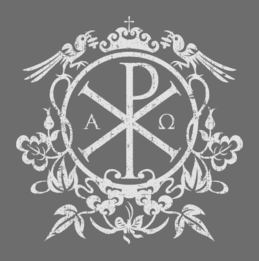
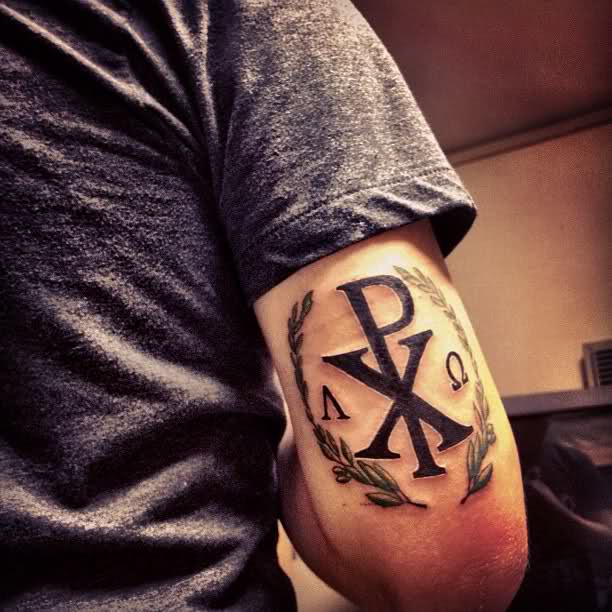
After he won the fierce battle he honored the battle by building a monstrous monument. Surely he made reference to Christ who gave him the symbol and that gave him instructions that helped him win the battle. No. No. He made the statue depict himself alongside the Sun God Helios in the forum of Rome. He also depicted his soldiers receiving assistance from various pagan Gods.

CONSTANTINE COIN TO FURTHER HIS CREATED RELIGION
Constantine the Great [c. 280 – 337 C.E.] really started the use of Christian symbols on coins in A.D.312 by showing on the reverse of his coins the labarum, the imperial standard, with a chrismon, and the inscription In hoc signo vinces–“By this sign thou shalt conquer”-
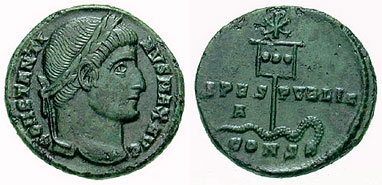
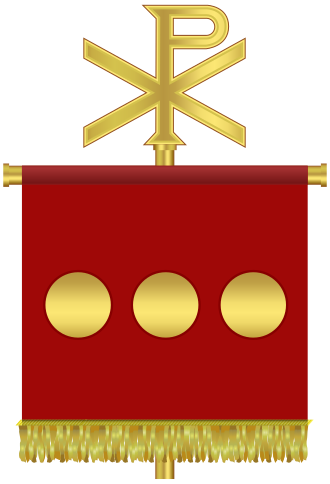
THE FIRST POPE
In Rome at the site of the alleged grave of Peter, Constantine constructed a huge basilica which today is at St. Peters Square in the country of the Vatican.
Constantine went by the title “Pontifex Maxius” which is the title for the high priest in the pagan worship world. This title was continued by all Emperors of Rome until 382 C.E. when it was passed to the Pope of the Catholic Church. Constantine was truly the first Pope.
Like all the Emperors Constantine lived up to the utterly vicious and cruel acts. During his wars in Gaul (306 to 312) it was written; “Even heathen feeling was shocked when he gave barbarian kings to the beasts, along with their followers by the thousands at a time.”
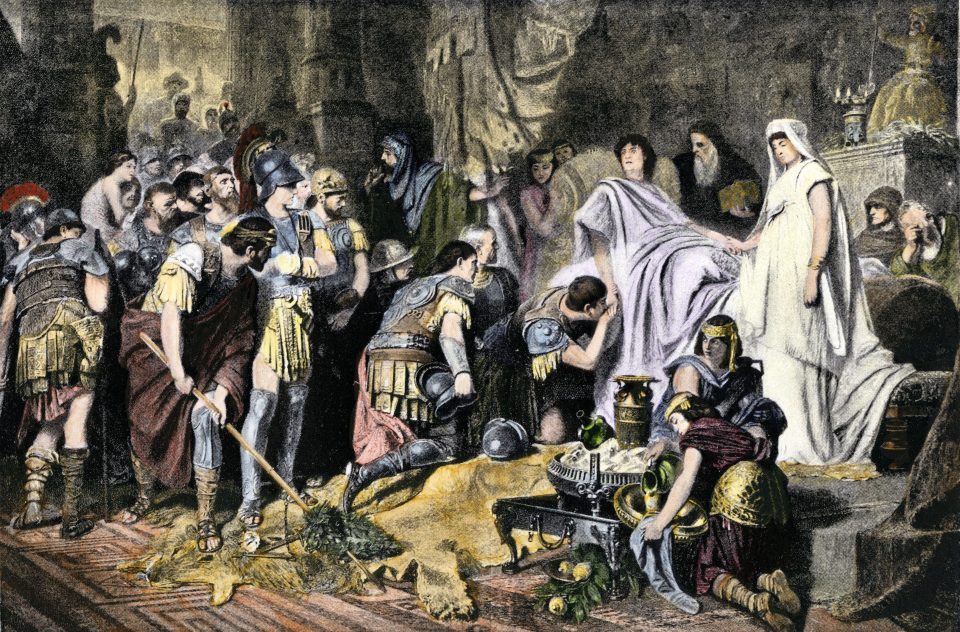
CONSTANTINE BAPTIZED
Constantine was never baptized into the Catholic Religion until his death bed. It is said that he deliberately waited until the end of his life because the baptism (according to the Catholics) would erase all his previous atrocious sins he had committed. He thus could go to heaven. He probably said yes only because he was on his death bed and some Catholic priest was insisting that he must and he wanted this priest who was taking care of him to have a positive attitude towards him and to stop the nagging.
I guess Christ (“the Prince of Peace”) who took on a warous role and gave Constantine that warous “military victory symbol” had not won him over after the victory. A Catholic priest remarked concerning his conversion and his baptism, “We will not be able to know his true sincerity. Only Christ will know.”
He was buried in the Church of the Apostles in Constantinople, the city he chose to be the capitol of his empire. His capitol and his created religion are both truly east meets west.

